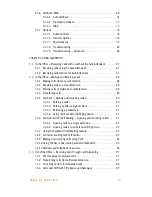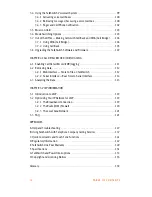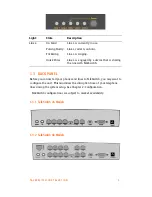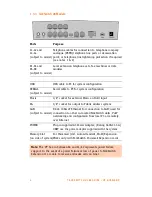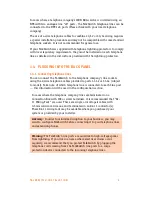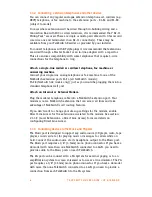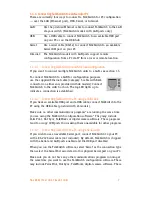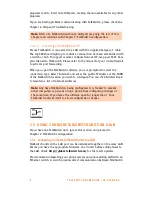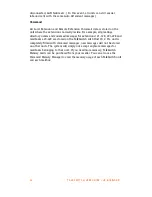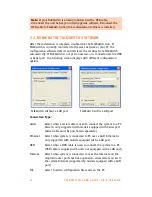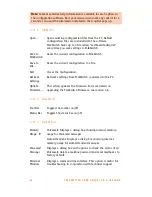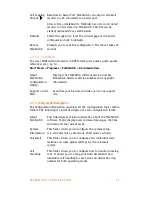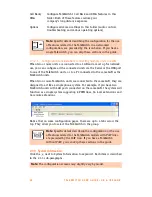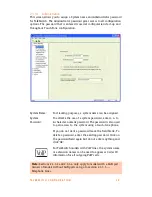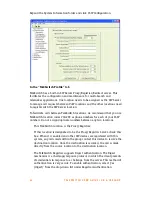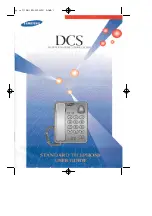
T A L K S W I T C H I N S T A L L A T I O N
1 1
there will always be 10 Extension Ring Groups with the extension numbers
300-309.
1.5.5 Keep track of the lines and extensions
To keep track of the extensions and lines connected to each TalkSwitch, label
each unit with its Unit ID. It simplifies matters when you need to add or
remove extensions and lines.
If the TalkSwitch units are located in a room away from the extensions and
you need to identify the units, there is a utility in the configuration
software that allows you to identify each unit by flashing the lights on the
front panel. Open the TalkSwitch Configuration software. To check details of
the TalkSwitch units on the LAN, click the ‘View System Information’ link on
the initial window below the TalkSwitch image. Select the Unit ID to verify.
Click the Identify button and observe the flashing LEDs. The lights stop
flashing when you click the ‘Close‘ button or when 5 minutes have elapsed.
1.5.6 Optimizing the system for networked use
TalkSwitch has been designed to operate optimally when in a networked
state. Here are a few items that have been designed for better network use:
Configuration Settings
All units are cloned with identical settings. In the event that a unit has
‘disappeared’ off the network (adapter unplugged, LAN connection
disconnected, LAN failure etc.), the system can still handle the calls, since it
retains the configuration settings of the ‘missing’ unit. In the event an
extension or voice mailbox cannot be reached, the caller hears a system
prompt to the effect:
“The extension you are trying to reach is currently
unavailable, please try again later.”
Outgoing Line Hunt Groups
By default, when two or more units are on a LAN, the system tries placing
calls out on the same TalkSwitch unit the call originates from. This avoids
using a line across the LAN on another unit, which helps to minimize the
LAN traffic and optimizes the opportunity for all inbound calls to connect
across the LAN if required.
Auto Attendants
There are a total of 9 Auto Attendants that are shared by all units on the
LAN. When an Auto Attendant is recorded on any unit, it is then
automatically copied to all other units on the LAN. This design minimizes
LAN traffic and also provides functionality back-up in case a unit or units
have ‘disappeared’ off the network (adapter unplugged, LAN connection



